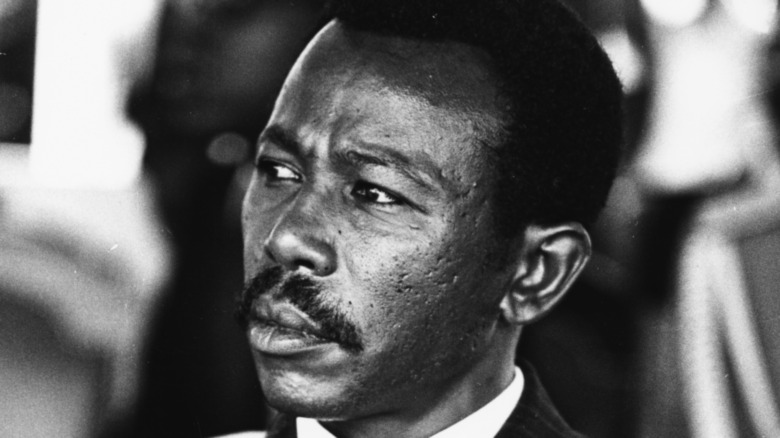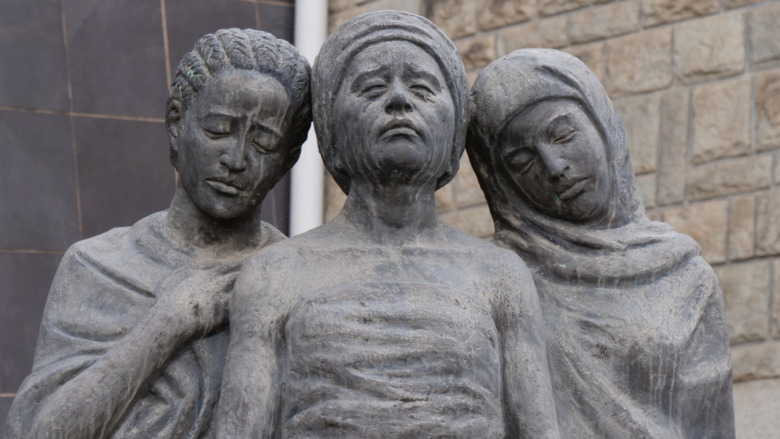The Truth Behind The Red Terror Campaign
In 1974, one of the longest-running empires in the world finally came to an end. The Ethiopian Empire had existed from 980 BCE and officially traced its lineage back to the biblical King Solomon. Those who took control called themselves the Derg (Ethiopian for "council"), and represented a Communist revolution that drew support directly from Cuba and the Soviet Union. Once in power, the Derg began a campaign to nationalize all industry and farmland, in addition to abolishing feudalism and promoting literacy. And like many revolutionary campaigns, they went about it, in part, by committing genocide against their political opponents.
The so-called "Red Terror" lasted in Ethiopia from 1974 to 1991, when the Derg and their leader, Mengistu Haile Mariam (above), executed tens of thousands of their political opponents (estimates range from 50,000-500,000) in some of the most horrific ways imaginable. Mengistu was deposed in 1991, but fled to Zimbabwe and, despite a genocide conviction, is still walking free.
The Red Terror was horrific and often carried out by civilians
Going into the 1970s, Ethiopian Emperor Haile Selassie had been enormously popular on a global scale, but the "perfect storm" of a severe famine and skyrocketing oil prices put his popularity in a freefall and eventually led to a military coup. The resulting power vacuum left Ethiopia with numerous competing political factions all struggling to seize power, but Mengistu eventually managed to consolidate the various Marxist-Leninist factions under the banner of "Provisional Military Administrative Council," which was colloquially shortened to "Derg." Mengistu was vice-chairman, but ordered the chairman assassinated. From there he began to consolidate his power by any means necessary.
Mengistu abolished the constitution, suspended the parliament, and began arresting, torturing, and killing his political enemies, including any leftists he deemed to be insufficiently pro-Derg. According to The Denver Post, Mengistu's prisoners report countless human rights abuses, including being flogged, hung by the arms, set on fire, and having their fingernails ripped out and testicles crushed. Per the Oxford Research Encyclopedias, while much of this state-sponsored violence was carried out by Mengistu's security personnel, a great deal of it was performed by civilians and newly formed pro-Derg militias as well. Monuments like the one pictured above remind the people of the horrors of that time.
The Red Terror ended in 1991, but Mengistu still walks free
Ironically, the forces that brought down Mengistu were nearly identical to those that brought down Haile Selassie. Ethiopia suffered a devastating drought from 1984 to 1985 (via the BBC); the terrible pop song "Do They Know It's Christmas?" was written in response to the situation. The drought's impact on the nation was severe. By then the Soviet Union was having numerous problems of its own (it would officially dissolve in 1991, the same year that Mengistu was deposed) and could no longer supply Mengistu with the backing he needed to maintain control.
In 1991, the Ethiopian People's Revolutionary Democratic Front deposed Mengistu, who fled to Zimbabwe. Mengistu was tried for genocide, convicted, and sentenced to life in prison in absentia in 2006. Two years later, the prosecution successfully appealed to increase the sentence to execution. For the moment, though, Mengistu is unlikely to serve either sentence, as Zimbabwe refuses to extradite him. "Mengistu applied for asylum and we granted him ... the position remains the same," according to Zimbabwe's information and publicity minister, reported by Reuters.
Mengistu, in the meantime, appears to be living a fairly quiet life, and is rarely seen in public.


